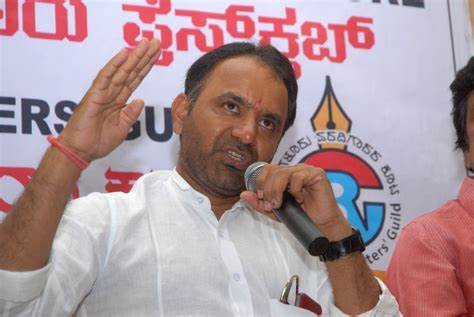Eco-Friendly Rath Yatra Merges Meitei Heritage, Vaishnav Devotion, and Diaspora Pride
Every summer, the bustling streets of Imphal transform into a living tapestry of devotion, colour, and music during Kang, Manipur’s unique celebration of Rath Yatra. On 29 June 2025, the ancient Shree Govindajee Temple inside Kangla Fort echoed with conch shells and pung drums as thousands of devotees gathered to pull the seven-tiered wooden chariot of Lord Jagannath, Goddess Subhadra, and Lord Balabhadra.
Locally, “Kang” means chariot in the Meitei language, and this festival is more than a religious procession—it is a century-old cultural bridge linking the royal Vaishnavite traditions introduced by King Pamheiba in the 18th century with modern Manipuri identity. In a state that has witnessed its share of unrest, Kang offers a rare moment of unity, drawing Meitei Hindus, Vaishnavite Nagas, and curious tourists into a single spiritual caravan.
This year’s Kang placed equal emphasis on heritage and sustainability: biodegradable cups replaced plastic, while volunteers distributed kheer, local jaggery sweets, and herbal drinks. With over 1,500 security personnel ensuring an incident-free six-hour procession, the festival underscored how faith, culture, and eco-awareness can seamlessly converge.
#RathYatra2025
— Maharaja Sanajaoba Leishemba. (@MaharajaManipur) June 27, 2025
KANG CHINGBA at Shri Shri Govindaji Mandir, Imphal.
May the Lord bless the people & State of Manipur with Peace & Prosperity. pic.twitter.com/V3s2gV8mBo
Chariots, Drum Dances, and Devotion—Inside Imphal’s Grand Kang Procession
The day began at dawn with Mangala Aarti offered by temple priests, followed by Governor Anusuiya Uikey ceremonially flagging off the chariot. The 40-foot‐tall Kang, painted in crimson and gold, rolled out of the temple gates onto Thangal Bazar, one of Imphal’s oldest commercial stretches.
Thousands of devotees—men, women, and children—gripped the thick hemp ropes to pull the chariot. Along the way, groups performed Pung Cholom (traditional Manipuri drum dance), interspersed by the energetic Dhol Cholom beats and birahari devotional songs. Women clad in vibrant phanek sarongs threw singju salad and chak‐hao (black rice) sweets to onlookers, while children sprinkled sandalwood water to cool the asphalt.
For many, the highlight was the ‘Samkirtan’ pit stops, where classical Meitei Vaishnavite hymns merged with the smell of burning incense and fresh lotus petals. The procession took the traditional triangular route—Shree Govindajee Temple to Khoyathong, past BT Road, and back—symbolising the cyclic journey of life, death, and rebirth.
Royal rituals, once overseen by Manipur’s monarchy, remain intact: a symbolic “royal umbrella” kept atop the chariot pays homage to the former kingdom, while brass gongs strike the same cadence used by palace priests centuries ago. The mingling of sacred traditions with street-level fervour makes Kang distinct from Puri’s Rath Yatra, even as both share Jagannath devotion at their core.
Green Rituals, Global Streams: How Kang is Taking Manipur to the World
Beyond spirituality, Kang 2025 spotlighted sustainability. The temple trust banned single-use plastics inside the Kangla Fort and along the procession route. Volunteers from local NGOs handed out eco-friendly banana-leaf plates for prasadam. Solar-powered lanterns illuminated evening aarti, reinforcing Manipur’s commitment to renewable energy.
Chief Minister N. Biren Singh, while addressing the crowd, lauded the festival’s green initiatives. He announced a state grant for next year’s Kang to upgrade the wooden chariot with responsibly sourced timber and install a solar rooftop on the temple guesthouse.
Kang’s influence reaches far beyond Manipur’s borders. Indian diaspora associations in Delhi, Bengaluru, and Guwahati synchronised mini-processions, livestreaming Imphal’s celebrations to thousands abroad. For Manipuri students in the U.S. and Europe, social-media feeds of the chariot inching through Imphal’s lanes rekindled memories of home and reinforced cultural pride.
Tourism officials estimate that Kang 2025 attracted over 12,000 domestic visitors and 1,200 foreign tourists—a 15 percent rise from last year—boosting local handicrafts like Leirum Potloi shawls and Thangka paintings. Workshops on Nat Sankirtana drumming and Thang-Ta martial art demonstrations added experiential layers for newcomers.
As dusk settled, priests performed the final Sandhya Aarti, and the chariot was docked back at Shree Govindajee Temple. Devotees left with sandalwood tilak on their foreheads and eco-friendly souvenirs in hand, embodying Kang’s evolving mantra: honour the past, embrace the present, and safeguard the future.





















